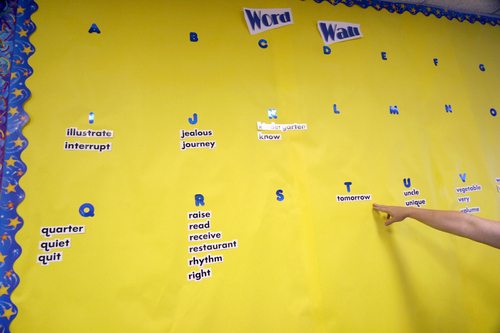
August 22, 2014;Education Week
The California Teachers Association is getting “serious about charter school organizing,” reports Arianna Prothero in Education Week. Prothero wasn’t referring to the CTA setting up charter schools, but reaching out to teachers and other charter school staff to organize and join unions.
Prothero reports about one organizing effort at the Alameda Community Learning Center, which was prompted by the charter school’s decision to increase required staff hours and eliminate their salary schedules. Staff voted for the union, an affiliate of the National Education Association, but negotiations with the school for a contract are still ongoing.
But now the CTA plans to step up its charter school labor organizing efforts. CTA board member Terri Jackson told Education Week that it took a little while for teachers to understand that “working conditions weren’t as good” in charter schools as they were in regular, unionized public schools. Nonetheless, union organizing hasn’t exactly taken off within the charter school movement. Prothero says that the Alliance for Public Charter Schools found only 12 percent of charter schools were unionized in 2011.
Jackson suggests the reason that few join up is the resistance of charter school management organizations to unions. “Charter school managers, they really don’t want to see educators unionized because…then you’re talking about due process, and a contract with certain rights in it. Without all of that, they can call the working conditions, they can determine the hours,” she says. Because so many charter schools were spawned from resistance to traditional public schools and all their trappings, including union contracts, our guess, too, is that management resistance plays a disproportionate role.
However, the president and CEO of the National Alliance of Public Charter Schools, Nina Rees, says that the low rate of unionization is because charter schools “are providing what makes for a good workplace.” The image of a happy, contented, complacent charter school workforce more than pleased with their working conditions fits the narrative used by many non-union employers, who hope that their workers will spurn union organizing efforts.
Sign up for our free newsletters
Subscribe to NPQ's newsletters to have our top stories delivered directly to your inbox.
By signing up, you agree to our privacy policy and terms of use, and to receive messages from NPQ and our partners.
Recent high teacher turnover rates in charter schools in New York City may shed more light on the workplace conditions facing charter school educators. Helen Zelon reports for City Limits that NYC charter schools “lose far more teachers every year than their traditional school counterparts…[and] in some schools more than half of the faculty ‘turn over’ from one school year to the next.”
Some explanations for the turnover of young charter school teachers make a certain sense—they are “moving up the leadership ladder” for more senior positions or moving to new charter schools, which are constantly opening in the City. But Zelon says it is more difficult to explain the turnover among veteran faculty. Charter school advocates debate the accuracy of the information from the state education department on teacher turnover, suggesting much lower rates of churn, but even the comparatively lower numbers from the City’s Charter School Center reveal a teacher turnover rate in charters still twice as high as teacher turnover in traditional public schools.
Very high turnover rates were even found at the high-profile Success Academies, run by former city council member Eva Moscowitz, and the Harlem Children’s Zone flagship Promise Academy. The latter lost 40 percent of its newer teachers and 36 percent of its veterans, according to state figures. The director of the Harlem Children’s Zone, Anne Williams-Isom, sidestepped directly addressing the impact of high turnover on school kids with this statement: “All 12,000 of our kids, including the 1,800 in our charter schools, are well aware that they are surrounded by a community of caring adults….They understand that this organization is here for them for whatever they need, 24/7, until they graduate college.” For her part, Moscowitz had her representatives challenge the accuracy of the state’s numbers, though Zelon found a quote from Moscowitz from 2011 where even she complained about a third of her Success Academies staff leaving midyear, calling the turnover “unethical.”
Some of the charter school teacher turnover might be due in part to the less-than-wonderful working conditions at some charters. Studies document much longer workweeks for charter school teachers than regular public school teachers, sometimes 60 to 80 hours. Other experts cite “routine” charter school requirements for long days, evening obligations, and weekend events. Zelon quotes a veteran charter teacher who said, “There’s not a lot of protections for teachers. It’s easy to get fired.” Education professor Pedro Noguera told City Limits that charter school teachers “in many cases have no avenues to express concerns about working conditions since they are not represented by unions.” Another education professor, David Bloomfield, suggested that some charter school teachers opt to move to traditional public schools because of the more generous salary, benefits, and pensions.
It would seem that some charter schools might not be the happy, joyous workplaces that charter advocates like to suggest. However, the lack of progress in union organizing suggests that the teachers’ unions themselves haven’t connected with charter school faculty in a way that effectively overcomes the resistance of the charter school managers.—Rick Cohen











